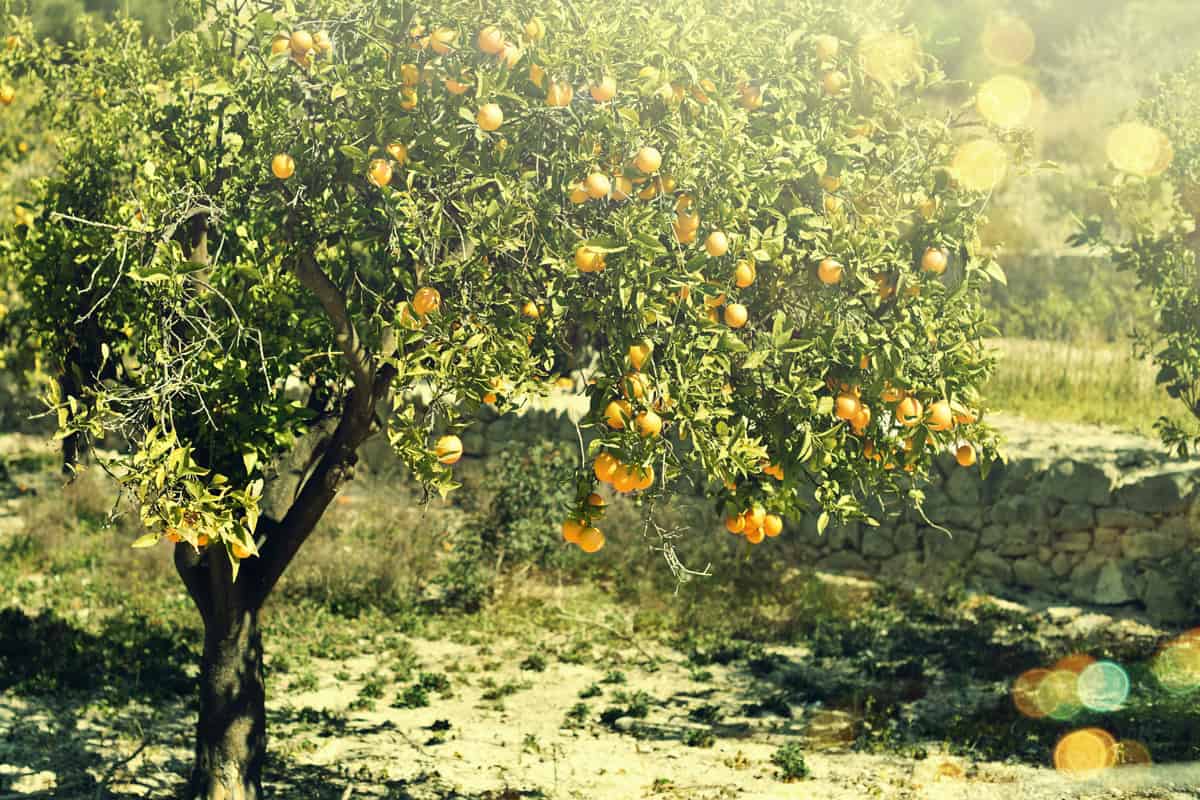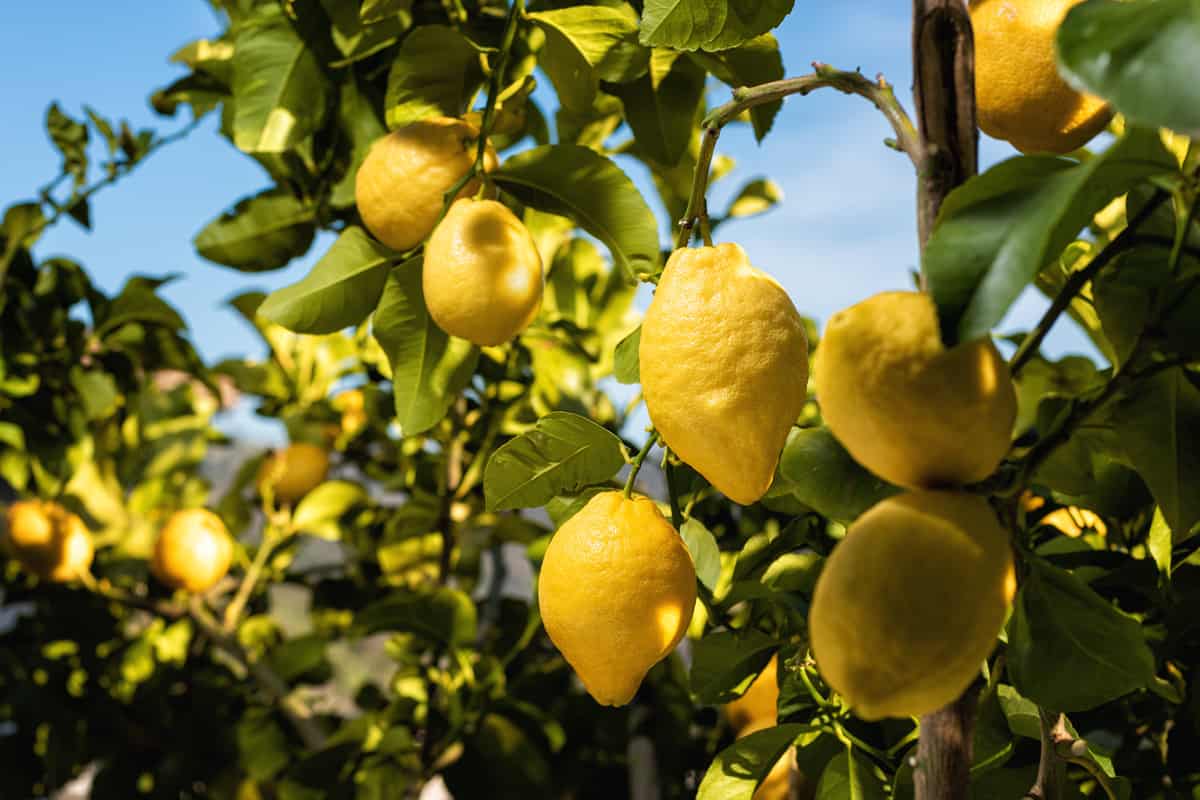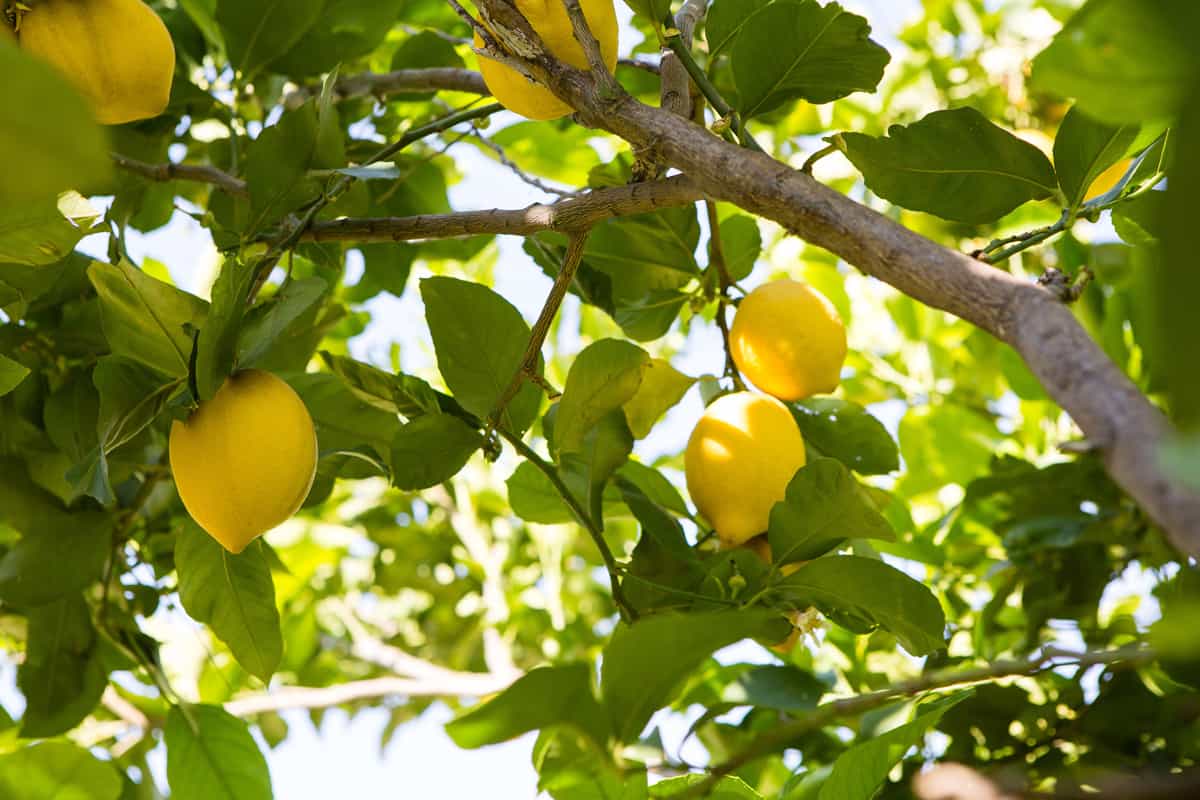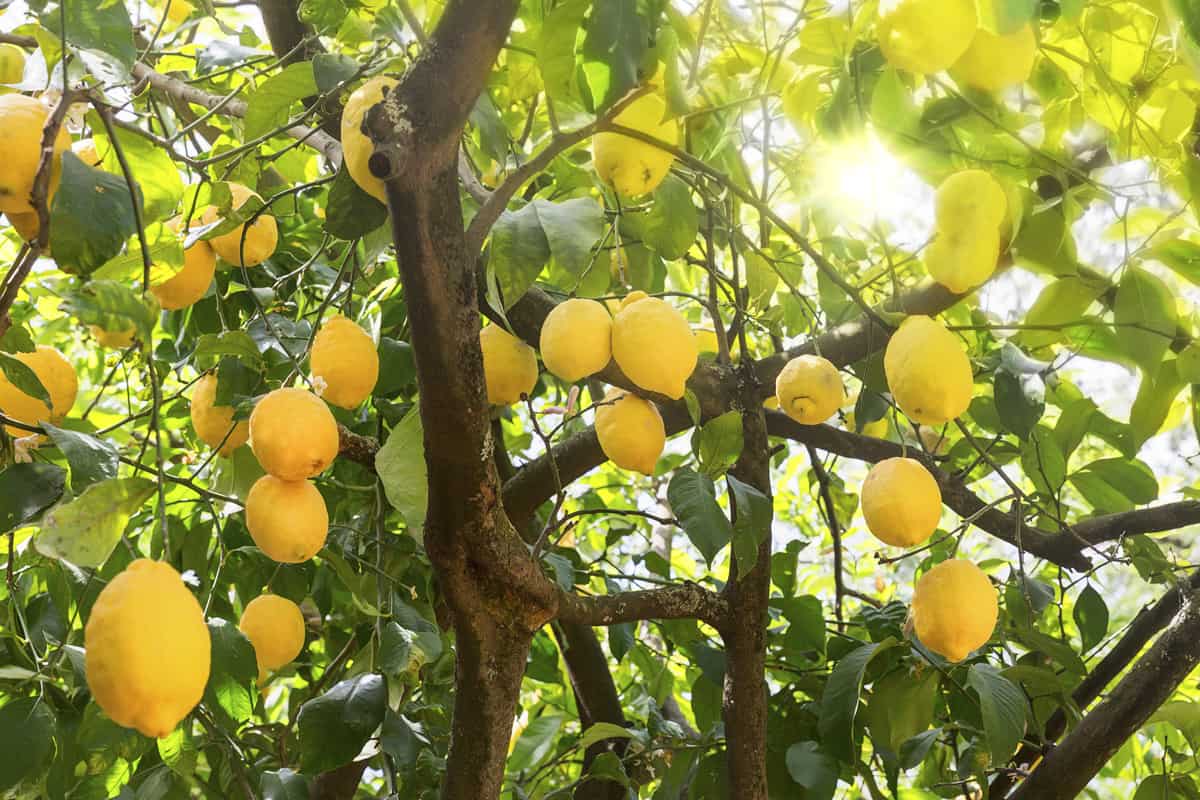Lemon trees are a great source of citrus fruits packed with vitamins and minerals. But when cultivating this tree, you may wonder if it is still alive or simply reacting to the season. We researched this for you, and this is what we found out:
You will know if a lemon tree is dead if it has an uncommon loss of leaves, stops producing flowers and fruits, and has a cracking bark. You can also cut a few inches of its branches and inspect whether the inner side covered by the bark is still green. If not, your lemon tree is most likely dead.
You can take various measures to revive it, such as giving adequate nutrients and proper care.
Now that you know how to tell whether your lemon tree is dead or not, we will talk about why this happens and further elaborate on how to bring it back to life. We will also discuss other matters that concern your plant, so make sure you keep reading.
![Healthy lemon tree with lots of ripe bearings ready for harvest, How To Tell If Lemon Tree Is Dead [And How To Revive It]](https://gardentabs.com/wp-content/uploads/2022/09/How-To-Tell-If-Lemon-Tree-Is-Dead-And-How-To-Revive-It-Pin-683x1024.jpg)
How Do You Get A Lemon Tree To Come Back To Life?
Like any other plant, a healthy lemon tree has many vibrant green leaves and smooth bark. They are often used as a decorative element since their colors complement each other. So, diagnosing them once their form starts looking weak is easy.
If you are looking for the signs to know whether your plant is dead, examine the tree for these symptoms:
![Healthy lemon tree with lots of ripe bearings ready for harvest, How To Tell If Lemon Tree Is Dead [And How To Revive It]](https://gardentabs.com/wp-content/uploads/2022/08/How-To-Tell-If-Lemon-Tree-Is-Dead-And-How-To-Revive-It.png)
Begin by checking its physical form. If the tree is dying, its deep green leaves start to have yellow or brown spots, and its edges twirl. This yellowing is different from that during the seasonal drops.
Additionally, the trees may also experience heavy leaf loss. Lemon trees lose only a few leaves between winter and early spring.

You may also notice that the barks shrink, resulting in cracks and a dry and rough texture. Additionally, the internal layers of the branches lose their green color. Typically, young lemon trees have bright green barks - the bark becomes yellow-green as they age.
If you consider its production capability, a dying lemon tree will fail to bloom during its growing season. Consequently, it will not produce lemon fruits for you since these fruits are formed when fertilization occurs in the flowers.
However, if your tree produces flowers but still fails to produce any citrus, then that may be because your tree is still young. Lemon trees start to bloom when they are 3 to 4 years old. They begin to bear fruit in the next year since they lack extra energy to sustain production labor.
So, can you still revive it? Yes! However, we should first know what caused its death in the first place.
Why Did My Lemon Tree Die?
There are several explanations for why your lemon tree came to its current condition. It is either you gave too much or too little care. We mean that you could have done either of the following activities.
- You watered it every day.
- You did not give it enough fertilizer for nutrient supply.
- It caught an infection such as root rot or botrytis fungus.
If you'd like to understand why your lemon tree died, please consider reading our earlier post: Why Is My Lemon Tree Dying?
Reviving A Lemon Tree
Here is a list of things you can do to bring back life to your lemon tree.
Maintain the Correct Watering Schedule
First, give it the right amount of water. Water the plant at least once or twice a week only. Also, ensure that the pot where you plant it has good drainage in it for the excess water to come out.
Lemon trees do not like overly wet soil—their roots decay when the soil remains wet for an extended period since oxygen cannot reach them. The tree may eventually die.
You can improve your pot's drainage system by using a terra cotta pot or drilling holes on its sides—drill 4 to 8 holes with a 1-inch diameter.
Since the water will come out as it drains, place a coaster or tray underneath the pot to prevent the liquid from spilling on the floor. Ensure you dispose of the gathered water to minimize exposure to plant pests like fungus gnats, shore flies, and bloodworms.

Signs That Your Lemon Tree Is Overwatered
Here are some signs to identify an overwatered lemon tree.
- Yellow, brown, and drooping of its leaves.
- You will find molds in the soil or the bottom part of the plant.
- Unpleasant smell in mulch.
- Root rot.
- The tree does not grow tall.
Regular Exposure to Sunlight
We all know how much plants need the sun to live - it enables our plants to make the food and energy they need to survive and grow. So, inadequate sunlight can cause your lemon tree to die.
Therefore, let your tree receive sunlight regularly, especially if you grow it indoors. Put your lemon tree outside during the day or in a spot where sun rays can reach it, say near a window.
Please note that your lemon tree can also get sunscalded or sunburned. So, bringing your potted plant outside in the morning is best if you live in an extremely hot area. But if you live in an area with mild temperatures, expose your plant to the afternoon sun instead.
How Long Should You Let Your Tree Sunbathe?
Lemon trees require full sun or at least 6 hours of exposure per day. Moreover, they need a direct hit of the heat.
If your plant receives sufficient sunlight, it will have enough energy to grow back its leaves, bloom, and eventually grow lemon fruits.
What Do You Do With Lemon Trees In The Winter?
Lemon trees are not one of those plants that love the snow. They are very sensitive to it and cannot withstand anything lower than 28 degrees Fahrenheit. If the temperatures go lower, your plant will suffer adverse consequences.
To take care of your tree, you can do the following:
- Put it in a sunshade a few weeks before the first frost to help your tree adjust to the winter season.
- Increase your home's humidity.
- Water regularly.
Find out more about how to take care of your lemon trees during the winter in this article: How To Overwinter Lemon Trees.
Supplying Enough Nutrient
Our last suggestion for reviving your lemon tree is to give it sufficient nutrients such as nitrogen, iron, and magnesium. Make sure to fertilize your plant quarterly. A good fertilizer is one whose formula concentration is not greater than 8 (8-8-8.)
Learn more about citrus trees fertilizers here: 5 Best Fertilizers For Citrus Trees
Are Coffee Grounds Good For Lemon Trees?

Coffee grounds are good for your lemon tree if you let them decompose first for 3 to 6 months to remove the caffeine infused in them. They are perfect as fertilizers because they are packed with nitrogen and can be used for composting.
If you decide to use the coffee grounds without adding them to compost, please ensure that they don't touch the lemon tree's trunk upon application. The caffeine they contain is quite harmful to a lemon tree's cycle. So, cover the coffee grounds with a layer of soil to help dilute any caffeine residue.
Also, water immediately to enable the nutrients to permeate the soil. The lemon tree's roots will then absorb these nutrients from the dirt.
Are Eggshells Good For Lemon Trees?
Eggshells are a good addition to providing nutrients to your lemon tree. Not only do they supply a good amount of calcium (which is a macronutrient), but eggshells can also balance the pH level of your plant.
To use them, you will need to crush the shells until they turn into powder form and mix them into your lemon tree's soil at a hollow level.
Are Banana Peels Good For Citrus Trees?
Although banana peels do not contain nitrogen, they can give other supplements to your lemon tree. They are used as fertilizers by simply putting them into the soil or burying them under the mulch.
Conclusion

To tell if your lemon tree is dead, look at its physical appearance. If it is losing a significant amount of leaves, its bark is shrinking and cracking, no flowers are blooming, and it is not bearing fruit, then it probably is.
Aside from that, you can break a branch to check if the inner layers are still green.
To revive your plant, use the right amount of water, use a well-drained pot, expose it to adequate sunlight, and feed it with fertilizer.
You can supplement the fertilizers you apply to your lemon tree with banana peels, coffee grounds, and eggshells since they are a source of nutrients necessary to help your plant grow.

my lemon tree has green lemons on it but is loosing its leaves bark is still green it is in a south window can’t put outside since it is snowing.